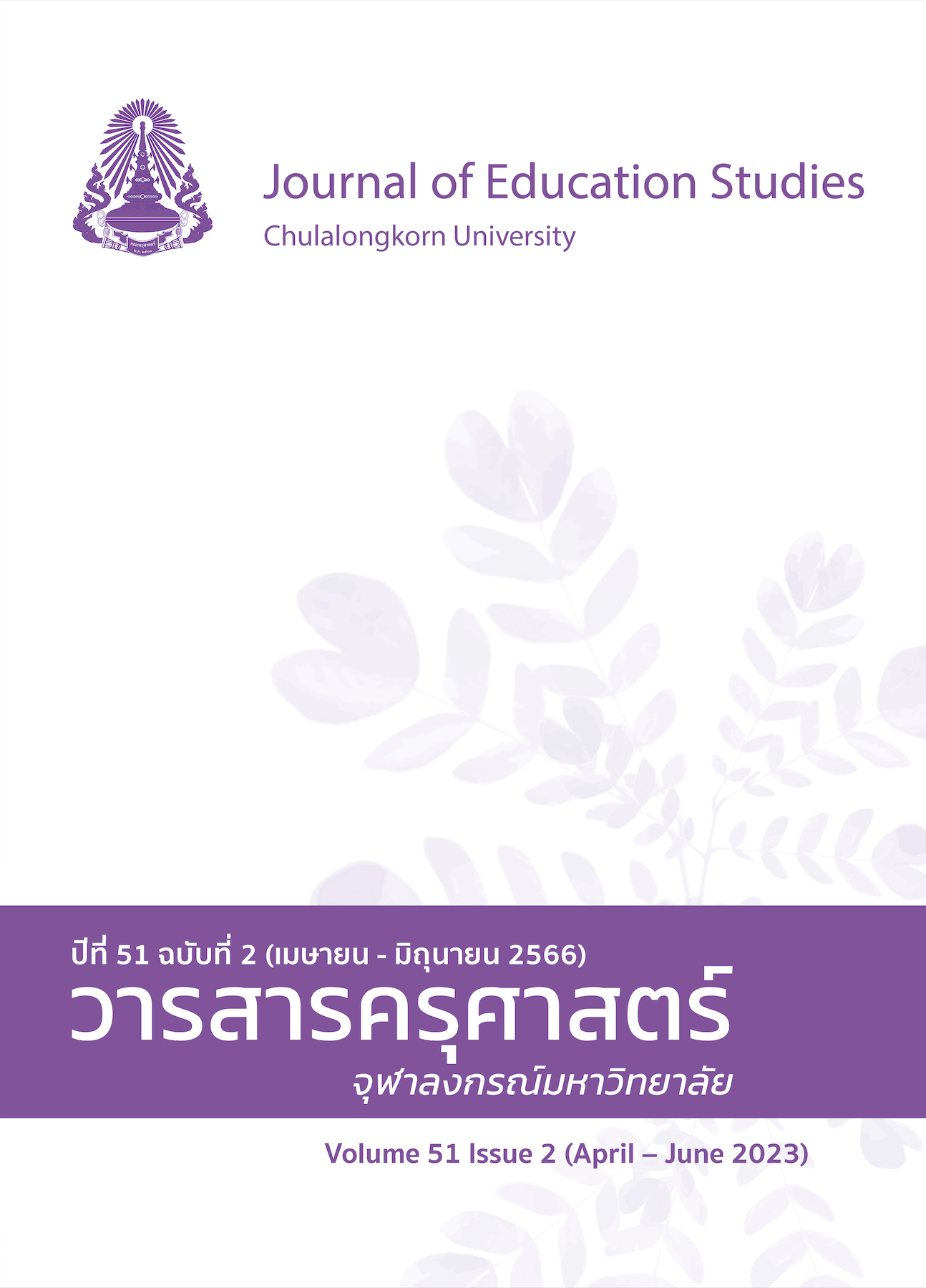Development of an Instructional Process Based on Problem Posing and Authentic Learning to Enhance the Mathematics Problem-Solving Ability of Elementary School Students in Nakhon Pathom
DOI:
https://doi.org/10.14456/educu.2023.16Keywords:
mathematics problem solving, problem posing, authentic learningAbstract
This research aimed to develop and study the efficiency of an instructional process based on problem posing and authentic learning in order to improve the mathematics problem-solving ability of primary school students in Nakhon Pathom province. The research was research and development-oriented and was divided into 2 phases: phase 1 focused on the development of the instructional process,
while Phase 2 involved an experiment for the instructional process using a quasi-experimental research method. The sample group consisted of 67 students in grade 6 categorized into 34 students in
the experiment group and 33 students in the control group. The tool for data collection was an assessment form for mathematics problem-solving ability. The results showed that: 1) The developed instructional process comprised of 5 steps; presenting a new problem situation and self-reflection, building a learning community, brainstorming with the group process, presenting and sharing the group concept, and summarizing and problem extension; 2) The experiment group had a higher average score for mathematics problem-solving ability for the post-test than the control group at the significance of .05
References
ภาษาไทย
กฤษฎา วรพิน. (2563). การพัฒนากระบวนการเรียนการสอนตามแนวคิดการเรียนรู้ตามสภาพจริงเพื่อส่งเสริมความสามารถในการแก้โจทย์ปัญหาคณิตศาสตร์ของนักเรียนระดับประถมศึกษา ในจังหวัดเพชรบุรี. วารสารครุศาสตร์จุฬาลงกรณ์มหาวิทยาลัย, 48(4), 1-19.
สถาบันทดสอบทางการศึกษาแห่งชาติ. (2564). ผลการสอบวัดคุณภาพระดับชาติ ปี 2563. http://bet.obec. go.th/nt/(Country).html.
ภาษาอังกฤษ
Brown, S. I., & Walter, M.. (2005). The Art of Problem Posing, 3rd ed. Mahwah, NJ: Lawrence Erlbaum Associates, Inc.
Burris. (2010). A Five-Step Problem-Solving Process. Pearson Allyn Bacon Prentice Hall Updated on Dec 22.
Cai & Hwang. (2002). Generalized and generative thinking in U.S. and Chinestudents’ mathematical problem solving and problem posing. (Journal of Mathemati Behavior). 401–421.
Contreras, J.. (2005). Posing and Solving Problems: TheEssence and Legacy of Mathematics. Oct,115–16.
Dendane, A. Dr.. (2009). Skills Needed for Mathematical Problem Solving.http://www. analyzemath.com.
English, L. D.. (2003). Children’s Problem posing Within Formal and Informal Contexts. Journal for Research in Mathematics Educatio, 29(1), 83-106.
Kerstin P.. (2013). The Problem Solving Cycle – An effective step-by-step approach to find Viable solutions.
Lavy, I., & Bershadsky, I.. (2010). Problem posing via “what if not?” strategy in solid geometry- a case study. (Journal of Mathematical Behavior), 22(4), 369-387.
Lombardi, M. M.. (2007). Authentic learning for the 21st century: An overview. In D. G. Oblinger (ED.), Educause learning Initiative. Advancing learning through IT innovation, 1-12: EDUCAUSE.
Mayer, R. E.. (2003). Learning and instruction. Upper Saddle River, NJ: Prentice Hall.
Mishra, S., & Iyer, S.. (2013). Problem posing exercises (PPE): an instructional strategy For learning of complex material in introductory programming courses. (In Technology for education (T4E)), 2013 IEEE fifth international conferenceon, (pp. 151-158).
National Council of Teachers of Mathematics (NCTM). (2010). Professional Standards for Teaching Mathematics. Reston, Virginia: The National Council of Teachers of Mathematics.
Reeves, T. C.. (2002). How do you know they are learning?: The importance of alignment in higher education. International Journal of Learning Technology, 2(4), 302–304.
Downloads
Published
How to Cite
Issue
Section
License

This work is licensed under a Creative Commons Attribution-NonCommercial-NoDerivatives 4.0 International License.




